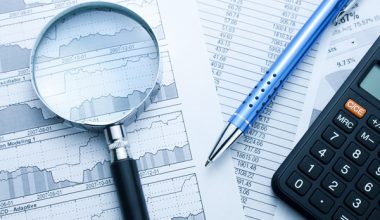Contingent liabilities may or may not be incurred depending on the outcome of a future event. For many businesses, these liabilities can be a source of risk, and knowledge of them is key to managing them. This blog post explores the meaning of contingent liabilities and how they are important, how they are recorded and accounted for, and how to minimize their risks.
Introduction to Contingent Liabilities
Contingent liabilities are potential liabilities that may or may not be incurred depending on the outcome of a future event. They are a type of unknown liability that may or may not arise in the future, depending on the occurrence of a particular event. The liability is contingent upon an uncertain event or circumstance that may or may not happen, such as legal action, a change in the economic climate, or a natural disaster.
Contingent liabilities can be a source of risk for businesses, and understanding and managing these liabilities is key to mitigating their potential impact. Knowing contingent liabilities and how to account for them is important for any business.
What are Contingent Liabilities?
Contingent liabilities are potential liabilities, meaning they are not yet actual liabilities. They are uncertain because the outcome of a future event is unknown. A contingent liability is an obligation that may or may not result in a loss for an organization, depending on the outcome of an event or circumstance.
These liabilities are not recorded on the balance sheet until they become actual liabilities. This means that they are not included in the organization’s financial statements until they become actual liabilities, and they are not included in the organization’s assets and liabilities until they become actual liabilities.
The most common contingencies are litigation, warranty claims, and product recalls. Other potential contingencies include environmental liabilities, deferred taxes, potential fines or penalties, and potential losses from investments.
Why are Contingent Liabilities Important?
Contingent liabilities can be a source of risk for a business. If the event or circumstance happens, the business will be liable for the liability. This can significantly impact the business’s financial position and profitability. For example, if a business is sued and the court ruling is not in its favor, it may be liable for a large amount of money.
Contingent liabilities can also affect a business’s creditworthiness. Lenders may be less likely to lend money to a business with many contingent liabilities due to the increased risk. This can also affect a business’s ability to raise capital, as investors will be wary of investing in a business with many uncertain liabilities.
When is a Contingent Liability Recorded?
Contingent liabilities are only recorded on the balance sheet when they become actual liabilities. This means that the liability must be probable, and the amount must be able to be estimated before it is recorded. It is not recorded if the liability is not probable or the amount cannot be estimated.
The contingent liability is recorded at its estimated amount, which may be higher or lower than the actual amount when it is eventually paid. The estimated amount is based on the best information available at the time. If the estimated amount is different than the actual amount that is eventually paid, the difference is recorded as an adjustment in the financial statements.
Examples of Contingent Liabilities
Contingent liabilities can arise from a variety of sources. Some common examples include:
- Litigation: If a business is sued, the court ruling may result in liability for the business.
- Warranty claims: If a business sells products, it may be liable for any defects in the product.
- Product recalls: If a business produces defective products, it may be liable for any costs associated with recalling the product.
- Environmental liabilities: If a business pollutes the environment, it may be liable for any costs associated with cleaning up the pollution.
- Deferred taxes: If a business has deferred taxes, it may be liable for the taxes when they become due.
- Potential fines or penalties: If a business violates a law or regulation, it may be liable for any fines or penalties imposed.
- Potential losses from investments: If a business invests in risky assets, it may be liable for any losses that it incurs.
What are the Types of Contingent Liabilities?
Contingent liabilities can be divided into two types: those that are probable and those that are reasonably possible. Probable contingent liabilities are more likely to occur, while possible contingent liabilities are less likely to occur but could still happen.
The type of contingent liability that is recorded depends on the amount that can be estimated. For probable contingent liabilities, the estimated amount must be greater than 10% of the business’s total liabilities. For possible contingent liabilities, the estimated amount must be greater than 5% of the total liabilities of the business.
How to Minimize Contingent Liabilities
Contingent liabilities can be a source of risk for a business. To minimize this risk, businesses should identify, manage, and mitigate contingent liabilities.
Businesses should have policies and procedures to identify potential contingencies and assess their impact. They should also have risk management policies and procedures to manage and mitigate their contingent liabilities.
Businesses should also have a contingency plan if a contingent liability occurs. This plan should include measures to reduce the impact of the liability and strategies to recover losses.
The Role of Contingent Liabilities Insurance
Contingent liabilities insurance can be an effective way to manage and mitigate the risks associated with contingent liabilities. This type of insurance provides coverage for potential liabilities that may arise in the future. The insurance covers the costs associated with litigation, warranty claims, product recalls, environmental liabilities, deferred taxes, and potential fines or penalties.
The insurance can also provide coverage for potential losses from investments. This type of insurance can help protect a business from potential losses and help the business recover any losses that may be incurred.
How to Account for Contingent Liabilities
Contingent liabilities are not recorded on the balance sheet until they become actual liabilities. When they become actual liabilities, they are recorded at their estimated amount. The estimated amount is based on the best information available at the time.
The estimated amount may be higher or lower than the actual amount when it is eventually paid. If the estimated amount is different than the actual amount that is eventually paid, the difference is recorded as an adjustment in the financial statements.
How do you show contingent liabilities on a balance sheet?
Contingent liabilities are recorded on the balance sheet under the heading “Other Liabilities.” They are recorded at their estimated amount, which may be higher or lower than the actual amount when it is eventually paid.
The estimated amount is based on the best information available at the time. If the estimated amount is different than the actual amount that is eventually paid, the difference is recorded as an adjustment in the financial statements.
Is bank loan contingent liabilities?
No, bank loans are not considered contingent liabilities. Bank loans are a type of debt, and they are recorded on the balance sheet as liabilities. They are not contingent liabilities because they are not uncertain liabilities; they have known liabilities that must be repaid.
What is a Contingent Liability in Accounting?
In accounting, a contingent liability is a potential liability that may or may not be incurred depending on the outcome of a future event. They are not recorded on the balance sheet until they become actual liabilities. When they become actual liabilities, they are recorded at their estimated amount, which may be higher or lower than the actual amount when it is eventually paid.
When Should I Be Concerned About Contingent Liability?
If you own a business or manage its finances, you must know the contingent liabilities you have assumed. You must also keep track of these. Companies must record contingent liabilities following the three accounting principles of full disclosure, materiality, and prudence under GAAP (generally accepted accounting principles) and IFRS (International Financial Reporting Standards).
If the contingency is likely and the amount of the liability can be reasonably estimated, a contingent liability must be recorded. GAAP classifies contingent liabilities into three categories: probable, possible, and remote. It is possible to estimate probable contingent liabilities (and must be reflected within financial statements). Possible contingent liabilities are equally likely to occur as they are not (and need only be disclosed in the financial statement footnotes). Remaining contingent liabilities will unlikely occur (and not need to be included in financial statements at all).
Is Contingent Liability a Legal Liability?
Yes. Although contingent liabilities must be estimated, they exist only when it is likely that some payment will be made. This is why they must be reported using accounting procedures and are considered “real” liabilities.
What Is the Purpose of Recording a Contingent Liability?
Because of its connection with three important accounting concepts, GAAP (Generally Accepted Accounting Principles) and IFRS (International Financial Reporting Standards) require corporations to record contingent liabilities.
#1. The Principle of Full Disclosure
The full disclosure concept states that all major, relevant facts about a company’s financial performance and fundamentals should be published in its financial statements.
A contingent liability threatens to lower the company’s assets and net profitability and hence has the potential to harm a company’s financial performance and health. As a result, according to the full disclosure principle, such occurrences or situations must be stated in a company’s financial statements.
#2. The Principle of Materiality
According to the materiality principle, all significant financial information and matters must be disclosed in financial statements. A substantial item is one whose knowledge could influence the economic decisions of users of the company’s financial statements.
The adjective “material” is synonymous with “important” in this context. A contingent liability can have a detrimental impact on a company’s financial performance and health; obviously, knowing about it might influence the decision-making of various users of the company’s financial statements.
#3. The Principle of Prudence
Prudence is an important accounting principle that ensures assets and revenue are not overstated while liabilities and expenses are not understated. Because the outcome of contingent liabilities cannot be predicted with certainty, the chance of the contingent event occurring is calculated. A liability and accompanying expense are recorded if it is greater than 50%. The recording of contingent liabilities prevents liabilities and expenses from being understated.
Investing with Knowledge of a Contingent Liability
Because a contingent liability might potentially lower a company’s assets and negatively affect a company’s future net profitability and cash flow, knowledge of a contingent liability can influence an investor’s decision.
An investor purchases stock in a firm to obtain a future share of its profits. Because a contingent liability might diminish a company’s potential to earn profits, knowing about it can deter an investor from investing in the company, depending on the type of contingency and the amount involved.
Similarly, a contingent liability can impact a creditor’s choice to lend money to a corporation. The contingent liability may harm the company’s capacity to repay its loan.
The Effect of Contingent Liabilities on Stock Prices
Contingent liabilities are likely to be bad for a company’s share price since they undermine its potential to create future profits. The size of the impact on the share price is determined by the possibility of the occurrence of contingent liability and the amount associated with it. Because contingent liabilities are unclear, it isn’t easy to assess and quantify their impact on a company’s share price.
The company’s financial stability also determines the extent of the impact. Though investors believe that the firm is in the such good financial shape that it can easily absorb any losses resulting from the contingent liability, they may choose to invest in the company even if the contingent liability looks to be an actual liability.
Although very high, contingent liability will not significantly impact a business’s share price, provided the company maintains a healthy cash flow position and rapidly generates earnings. The nature of the contingent liability and the accompanying risk are critical considerations.
A contingent liability expected to be settled soon is more likely to impact a company’s share price than one not expected to be settled for several years. The longer it takes to settle a contingent liability, the less probable it will become an actual liability.
According to GAAP, contingent liabilities are classified into three types based on their chance of occurrence. The first category is the “high likelihood” contingency, which implies that the liability is more likely to occur than 50% of the time. The amount connected with it can be anticipated with good precision. Such events are reflected on the income statement as an expense and the balance sheet as a liability.
Read Also: Revenue Recognition Principle (GAAP) and The New Revised Principle
A “medium probability” contingency meets one of the parameters of a high probability contingency but not both. If one of the criteria is met, these liabilities must be reported in the financial statements’ footnotes.
Contingent liabilities that do not fit into the abovementioned categories are classified as “low likelihood.” Because the chance of a cost resulting from these obligations is exceedingly low, accountants are not obligated to mention them in financial statements. However, such obligations are sometimes disclosed by firms anyway.
Adding Contingent Liabilities to a Financial Model
Because of the level of subjectivity involved, modeling contingent liabilities can be difficult. When it comes to calculating contingent liabilities, analysts are divided.
As a general rule, the influence of contingent liabilities on cash flow should be included in a financial model if the likelihood of the contingent liability becoming an actual liability is more than 50%. In some circumstances, an analyst may present two scenarios in a financial model, one with and one without the cash flow impact of contingent liabilities.
Conclusion
Contingent liabilities are potential liabilities that may or may not be incurred depending on the outcome of a future event. They can be a source of risk for businesses, and understanding and managing these liabilities is key to mitigating their potential impact. Knowing contingent liabilities and how to account for them is important for any business.
By understanding the meaning of contingent liabilities, businesses can take steps to identify, manage, and mitigate their contingent liabilities. They can also purchase contingent liabilities insurance to protect against potential losses. Finally, businesses should understand how to account for contingent liabilities and how to show them on the balance sheet.
Related Articles
- CONTINGENT IN REAL ESTATE: Difference Between Pending and Contingent in Real Estate
- Contingent Beneficiary: Definition, Characteristics & All you should know
- VENDOR MANAGEMENT SYSTEMS: Definition, Types, and Top Systems
- WHAT ARE ASSETS AND LIABILITIES: Definition, Differences, and Examples
- Tertiary Beneficiary: Understanding Beneficiary Options






